The Legislative Council approved the Fruit and Produce Exchange Bill on 15 September of 1903, in which Mr W Charlick detailed his plans to open the market, which was not to exceed 4 acres, and to spend at least £10 000. The Bill indicated that the Corporation of Adelaide reserved the right to purhcase the market in 18 years, or every five years thereafter, at an agreed-upon price. Later, in December 1903, William Charlick, AT Magarey, CA Richardson, WW James, and Joseph Vardon became the board of directors for the exchange, and company founder William Charlick took the title of the chairman of the board of directors. The market was completed in April 1904, and 120 gardeners and market traders committed to conducting business. The market’s Chairman of Directors was Mr. W Charlick, after which Charlick Circuit is named.
Expansions and Taxes
In 1906, the directors issued 5 400 shares and raised £2 744 for expansion, which was spent on acquiring property west of Union Street. In 1908, the Exchange purchased properties known as Krantz’s and Ebenezer Chapel to further expand. In 1909, the market’s business suffered because of a strike in Broken Hill, New South Wales. Since Broken Hill did not have suitably arable land for farming, the directors hoped that ties between the market and Broken Hill would soon strengthen.
In 1911, the Adelaide Local Board of Health deemed the market as unsuitable for living accommodations, primarily because the windows opened onto the market and thus did not provide fresh air. When the Adelaide Fruit and Produce Exchange denied to follow the Local Board of Health’s orders, the board sought legal action. In 1911 or 1912, part of the market was damaged by fire, but the shareholders rallied to restore the damaged portions and even more stores were added. Business was excellent; on busy mornings gardeners struggled to park their vehicles near their booths. The facade was repainted, and the market bought a motor sweeper to clean the premises and finished paving the market floors in Blackwood brick. Shareholders also sold an isolated part of their property holdings on Union Street to make a tidy profit. In 1913, the directors decided to provide more room, specifically for more stalls and two new shops. An architect estimated that the alterations would cost £3 000. Also in 1913, a director of the market died: Joseph Vardon. The directors named a newly-acquired property and its road ‘Vardon Avenue’ in his memory. In 1914, a newly-constructed Vardon Avenue facilitated better traffic and allowed for the addition of 30 more gardeners to the exchange. Still, the board of directors planned to add another large store imminently.
In 1915, market shareholders remained optimistic as the market brought in a profit despite the war and drought (and its effect on gardeners, many of whose crops failed). In 1916, the federal government levied a tax on the market for its activities in the last five years, which the directors reluctantly paid but successfully appealed. In 1917, excessive flooding and rain left gardeners at the exchange complaining that their business was hurt. In 1918, the Adelaide Fruit and Produce Exchange had an estimated value of £73 313, of which £70 000 were property assets. In 1919, after adding a new overhead water service for fire protection, the board of directors of the Fruit and Produce Exchange reccommended that “certain premiurs and reserves should be added to the capital”, and increased from £40 000 to £60 000. In light of rising expenses in 1920, renters had to pay an increased sum of £11 for their stall each year.
In 1921, the market had acquired a store on Grenfell street and more properties on Union Street, which were quickly occupied. Again in 1922, the directors of the market faced a tax, this time in the form of a land tax, which they decided to appeal. Market secretary Mr TH Brooker often successfully diffused the tensions between the market shareholders and the taxing government. Hesitancy to pay increasing taxes partly came from the shareholders’ debt in mortgage fees. They collectively owed £30 000. In 1923 wildly fluctuating weather threatened the market’s stability, as the first half of the year was very dry and the second brought heavy rain and flooding. The directors issued new shares, the profits of which would help pay for the market’s mortgage.
A Changing Market
In 1924, a growing railway presence and its transport of perishables led to less gardener participation in the market, but directors remained optimistic. Storms that year also damaged much of the market’s buildings, which led to larger expenses for repairs and renovations. In 1925, William Charlick retired from his title as the chairman of the board of directors, a position he held by re-election since founding the Produce Market in 1903. Evergrowing taxes in 1931 led the directors to announce that it was causing
Grave concern to all connected with the market gardening and fruitgrowing industries, and certainly is no encouragement for the very arduous and strenuous conditions under which this community of primary producers labor.
In 1934 financial troubles arose in another form: market storeholders were concerned about road transport of perishables threatening their business. In 1938 the Adelaide Fruit and Produce Exchange acquired land formerly owned by Richard Spencer & Son, coach builders, which comprised of 3/4 an acre, in hopes that this addition would relieve congestion around the market. In 1939 the market also acquired buildings near Tavistock Lane, and its directors hoped their renovations would be finished by the end of August and open for business. However, the alterations finished in November.
In 1944, the directors reported that the relationship between grower and consumer had changed, since ‘a large quantity of produce’ was then being marketed in bulk and sold in stores. As a result, daily stand collections were ‘light’. Due to the extremely dry season, in 1945 produce supply was short, and many gardeners were not always at their stalls during business hours. However, the balance of that business year came to £10 520, which was more than the year before. Directors at the meeting expressed hopes that the military would soon vacate part of the Fruit and Produce Exchange, which in turn could be rented by growers. 1946 left the directors content, as ‘many men have returned to the trade, and there has been a large increase in attendances, especially of retailers’. However, the military still occupied some of the market’s premises. In March 1947, the military finally vacated the market, and the August meeting of directors revealed that the increasing profit trend from 1942 had been interrupted that year.
On 12 March 1948, the Governor of South Australia, Sir Willoughby Norrie, his wife Lady Norrie, and Premier Mr. Thomas Playford visited the Fruit and Produce Exchange (Mr. Thomas Playford was Premier of South Australia from 5 November 1938 to 10 March 1965, making his term the longest of any elected government official in Australia). The party arrived at 7 am when loading was starting; a minor traffic jam resulted. Mr. WJ Burdett, director of the exchange, presented the visitors with baskets of fruit and flowers. On 3 September 1949 the Adelaide Fruit and Produce Exchange bought Adelaide Stadium, a boxing ring, to expand their markets. In April 1950 members of Adelaide City Council proposed widening Tavistock and Ackland streets by 40 feet to continue Frome road. While council members expected that this change would relieve congestion, East End business owners like Mr FH Wray (secretary of the Adelaide Fruit and Produce Exchange) were largely opposed, since the change would entail reorganisation of their businesses and decreased traffic. At the end of financial year, 1954, the Adelaide Fruit and Produce Exchange made more profit than the year before: £11 896 as compared to £10 779. The market closed in 1988.


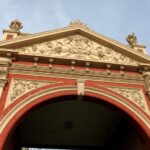

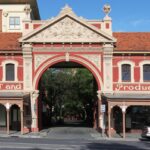
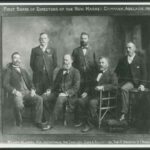
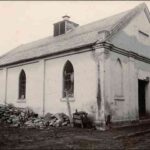
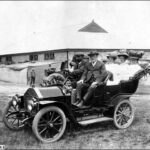

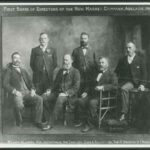
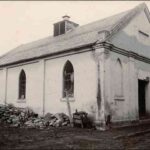
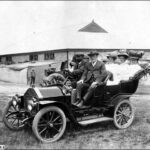
Comments